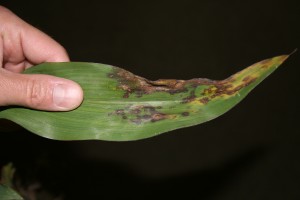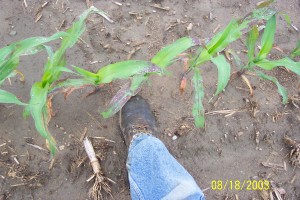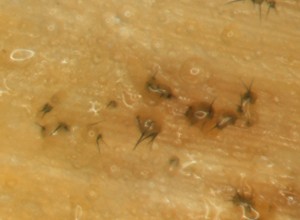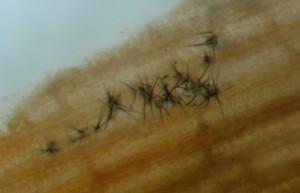Anthracnose leaf blight of corn
Anthracnose leaf blight of corn
Jackie Smith and Steven Gower, MSU Diagnostic Services
Field crop CAT Alert June 19, 2008
Several corn samples have been submitted to the lab over the past few days infected with Anthracnose leaf blight. All samples have come from fields where corn was grown last season.
Anthracnose of corn is caused by the fungus, Colletotrichum graminicola. The fungus survives in corn residue, first infecting the lower corn leaves as the spores are splashed from the soil surface. Leaf spots are round to irregular, water-soaked lesions with dark tan centers and yellowish-orange to reddish-brown borders. Lesions usually appear near the leaf tip and mid rib. Lesions can coalesce causing the lower leaves to shrivel and die. Fruiting bodies (acervuli) with black, whisker-like setae can be seen with a hand lens on infected leaves.
Anthracnose fungus survives in corn residue, especially on the soil surface. Therefore, this disease may be more serious under reduced tillage systems and in continuous corn.
Anthracnose leaf blight is best controlled through the use of resistant hybrids along with crop rotation and tillage.







 Print
Print Email
Email